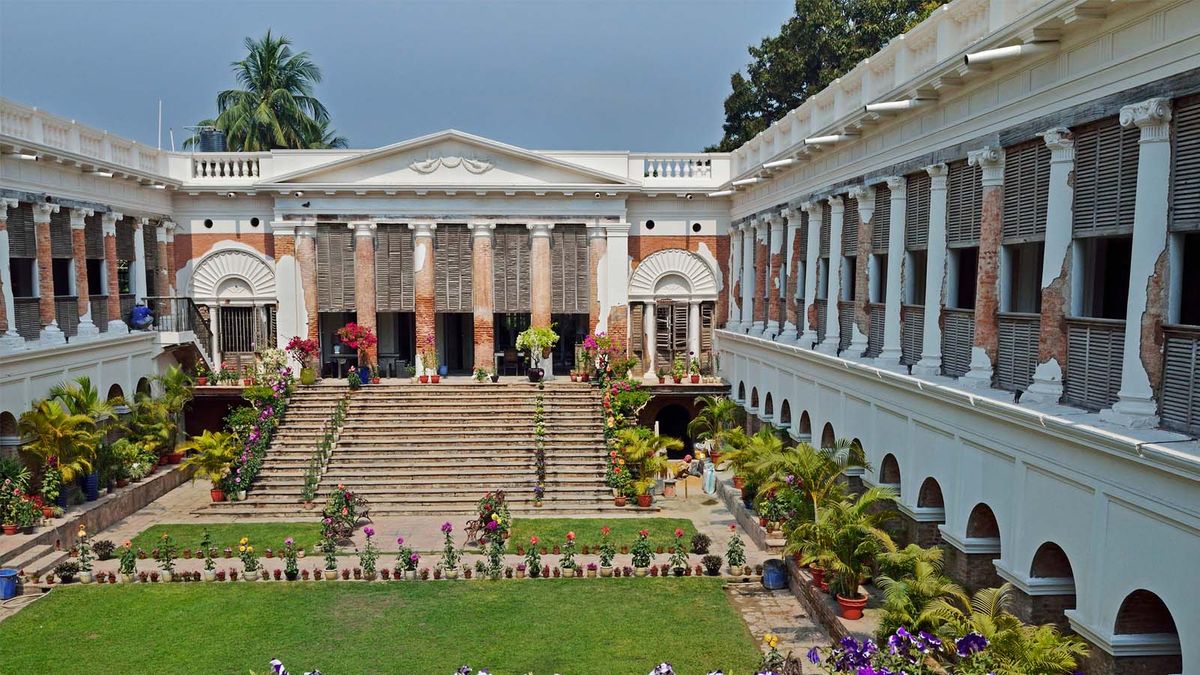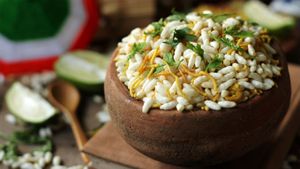Kolkata has earned the moniker City of Palaces—and for all the right reasons. Tucked in grungy gullies, in now congested nooks of the city are stately mansions of erstwhile aristocrats, the crumbling skeletons of once pompous edifices overlooking the listless Hoogly and those struggling to breathe from under layers of soot and moss. Not only in Kolkata but across Bengal there are numerous palatial homesteads, often referred to as Rajbari (king’s home) that once belonged to the region’s erstwhile landed gentry, each witness to the relentless vagaries of time. The walls of these mansions are steeped in the region’s history and lore, and offer a glimpse of times long gone. In recent years some of these homes that had fallen to disrepair have been resurrected from advanced stages of ruins and converted into homestays and hotels ranging from comfy to luxurious. We pick five Rajbaris in the vicinity of the city that make for wonderful getaways.
1. Bawali Rajbari
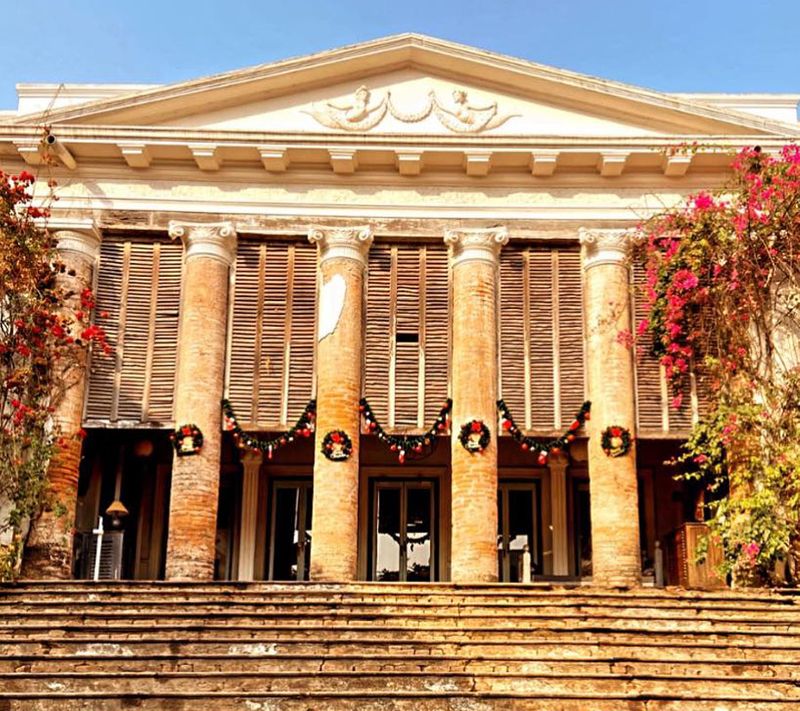
Nearly three centuries old, this palatial Neo-Classical mansion tucked away in the village of Bawali is the South 24 Parganas, once belonged to the illustrious Mondal Family. The property reduced to a decrepit carcass after decades of neglect was restored to build a luxurious heritage resort. The sprawling mansion with its huge central courtyard; the majestic stairway leading up to the regal, pedimented portico with its imposing Greek columns; and long, collonaded balconies with louvred screens and intricately latticed balustrades make for a stunning setting for a lavish staycation.
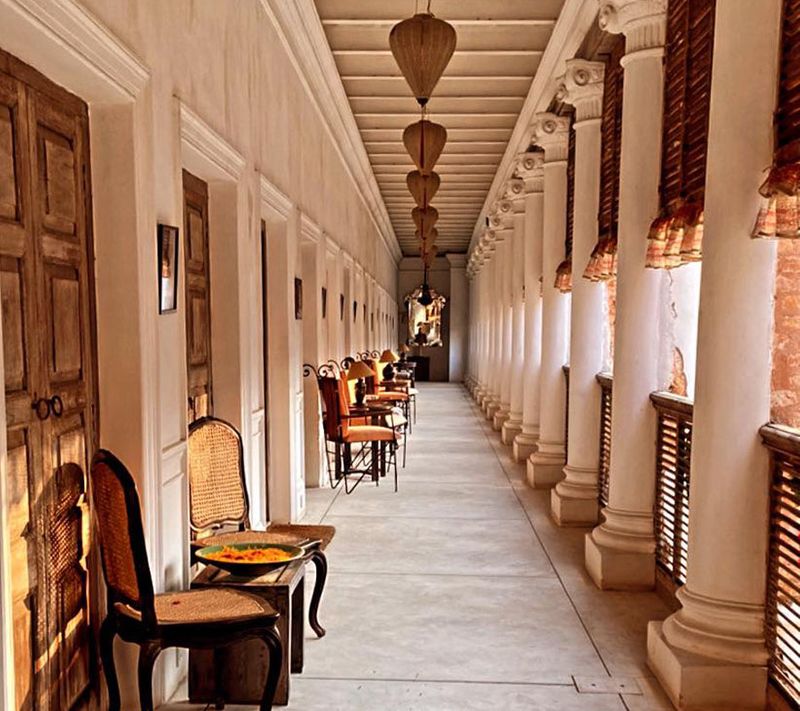
The Rajbari has 30 well-appointed rooms and suites along with a library, spa, drink and dine outfits, and a dungeon-turned-billiards room. The striking interiors combine a quirky design sense with old-world opulence to create quite the aesthetic extravaganza. Chill by the pool that is adjacent to a natural pond, explore on foot the lush greenery dotted with pillared pavilions, pretty cottages and quaint gazebos, and enjoy a traditional Bengali meal served on bell metal crockery. In fact, expect a generous garnish of the usual tropes of Bangaliyana—from the laal-paar shada shari to boron rituals and shandhya arati to perk your state.
When to visit: While winter is the best time to visit, the Rajbari is a good pick any time of the year.
How to visit: Drive down or take a Burdwan-bound local train from Howrah Station to Khanyan station, a 10-minute drive from the Rajbari.
2. Itachuna Rajbari
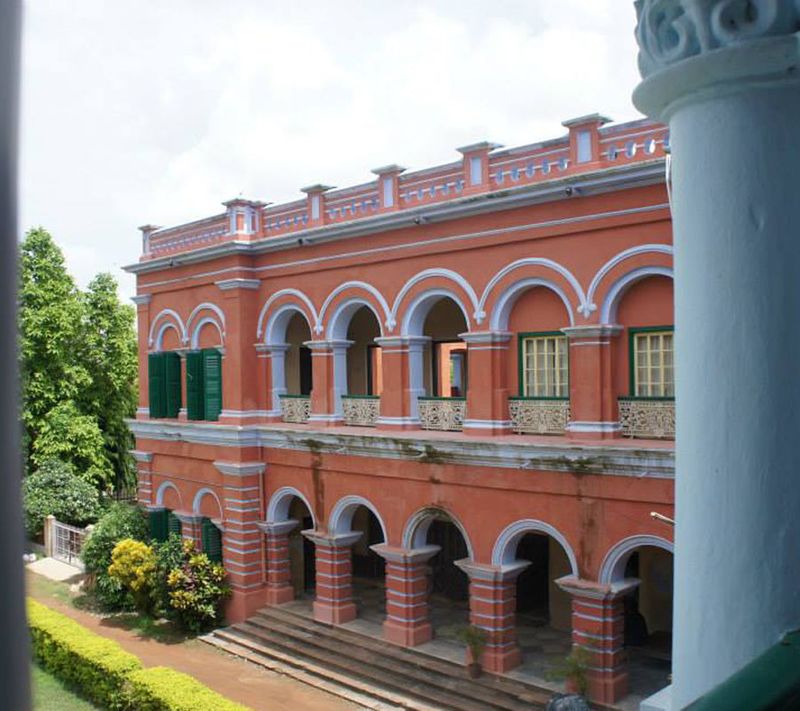
The Itachuna Rajbari, a stately feudal mansion nestled in a quaint village in the Hooghly district, was converted into a heritage homestay a few years ago. Built by Safallya Narayan Kundu, an illustrious member of Bengal’s erstwhile landed gentry in 1766, the 256-year old Rajbari is steeped in history and legends that trace their roots back to the times when Maratha warriors, called Bargees in Bengali, plundered the region over a decade. The Kundus, in fact, descended from one of the Maratha warriors titled Kundans. This is also where the Ranveer Singh and Sonakshi Sinha starrer Lootera was shot.
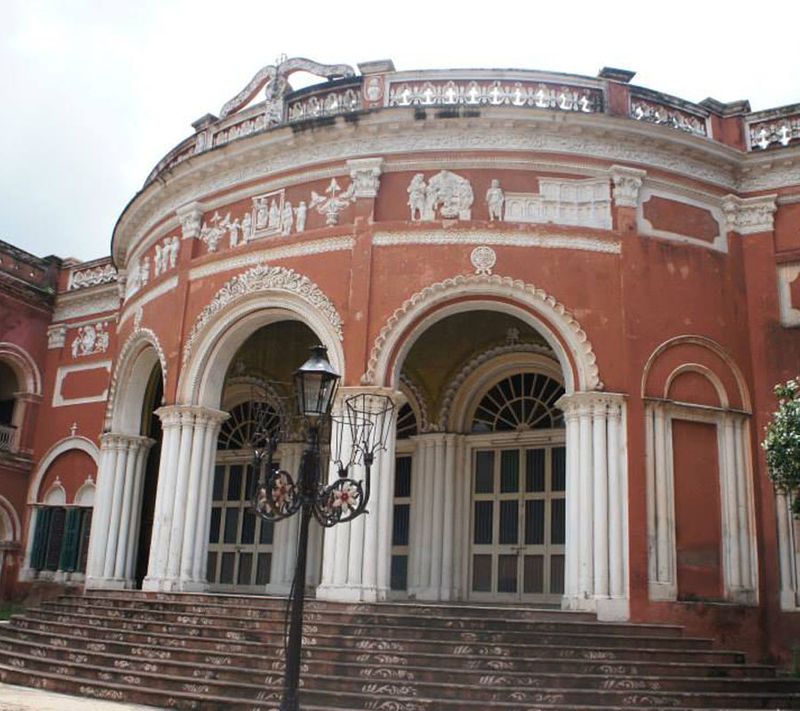
You could book a stay at one of their cozy rooms furnished with period furniture or a mud cottage by the lotus pond. Explore the mansion’s many corridors, stairways and verandah, and nooks and crannies; participate in the evening aarti at the Kundus’ private temple; enjoy home-cooked Bengali meals;and take a walk in the surrounding villages—the Rajbari is all about the simple pleasures of life and rural quaintitude. During the winter, they organize customised barbeques and bonfires under the stars, perfect for a night of sharing spooky tales considering how the Rajbari is said to have a few of its own. Besides, you could explore the Vaishnav Terracotta temples of Guptipara, merely an hour’s drive from the Rajbari or visit the stunning Hangseshwari temple with its 13 conical spires fashioned as blooming lotuses with petal-like accents, in Bansberia, 20kms away.
When to visit: While winter is the best time to visit, the Rajbari is a good pick any time of the year.
How to visit: Drive down or take a Burdwan-bound local train from Howrah Station to Khanyan station. A 10-minute toto ride will take you to the Rajbari.
3. Jhargram Palace
Jhargram Palace, the majestic residence of the Malla Dev family of the Jhargram Raj, is a beautiful specimen of Italianate-style architecture complete with columned loggia, pedimented portico, stately cupola, and a grand belvedere overlooking the palace’s landscaped gardens. Steeped in history, the palace has hosted numerous illustrious dignitaries over the nine-decades since its inception.
A section of the palace has been converted into a heritage hotel that offers tastefully designed rooms, that blend of European and Indian elements to recreate the regal lifestyle of an era gone by. In addition to soaking up the old world charms and bucolic beauty of the surrounding countryside, one could indulge in numerous activities during the stay at the Jhargram Palace. Go hiking in Belpahari forests a short drive away, stop by at the Khandarini Lake—a veritable sanctuary for migratory birds—or drive down to the medieval fort of Kurumbera. The Rajbari also offers special rates for authors or artists for residencies.
When to visit: Any time of the year.
How to visit: Jhargram is a four-hour drive from Kolkata. You could also take a train from Kolkata to Jhargram station and hire a taxi to reach the Rajbari.
4. Belur Rash Bari
Nestled on the banks of the Hooghly, the 150-year-old Belur Rash Bari complex—which comprises a cluster of temples, pavilions, and a striking clock tower built on rows of Corinthian pillars with ornate cornices and residential quarters—belongs to the Daw family of Jorasankho, one of Kolkata’s illustrious bonedi or aristocratic households.
At the heart of the Rash Bari, essentially built like a garden house, is the nine-pinnacle or Nabaratna style temple dedicated to Radharam Jew, the family deity, who stands flanked by a pillared nata mandir. Besides, there are six Shiv Temples, built in the typical aatchaala (eight roof) style. The temple complex and the manicured gardens with their brick pathways leading up to the river offer panoramic views of the Hooghly. The guest house with its long-running balcony overlooking the river offer smartly furnished rooms, apt for a comfy stay.
When to visit: Any time of the year. The Rash Bari is famous for its extravagant celebrations during the festival of ras, dedicated to Radha and Krishna
How to visit: The place is a short drive from Kolkata, located near Belur Math.
5. Baithakkhana Amadpur
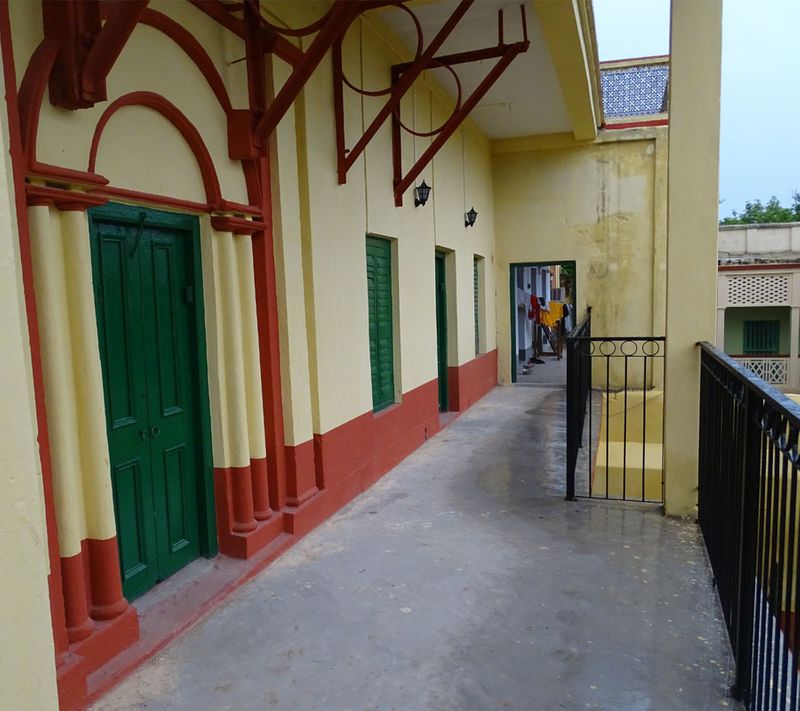
Drive down to the quaint village of Amadpur in the Bardhaman district, a couple of hours drive from Kolkata, for a quiet stay at the sprawling mansion of the Chaudhuris—erstwhile zamindars of the region—who settled in Amadpur nearly four centuries ago. Shiladitya Chaudhuri, a scion of the family, who took up the gargantuan task of restoring the crumbling Amadpur mansion a few years ago, says: “Documented reference to our family dates as far back as over a 1000 years.”
Nuggets from the Chaudhuris’ illustrious history—be it in the form of intricate period furniture, antique paraphernalia, or stories recounted by locals—are strewn around the 400-acre homestead surrounded by lush greenery, bamboo groves and mango orchards, and crumbling edifices of centuries-old terracotta temples. The Boro Bari that houses guests—with its high, exposed rafter ceilings, louvred windows and thick walls that keep the place cool even during the peak of summers—stands adjacent to a massive dighi, the quiet waters perfect for a late-afternoon dip after a walk around the village. The Chaudhuris have carefully preserved the old world charms of the place by skirting modern amenities and aesthetic superfluities. What makes this place special is the cosy, lived-in feel and warm intimacy that transports you to another time and way of life.
When to visit: While winters are the best time to visit, the Rajbari is a good pick any time of the year.
How to visit: Drive down or take a Burdwan-bound local train from Howrah Station to Memari station, a 10-minute drive from the Rajbari.


